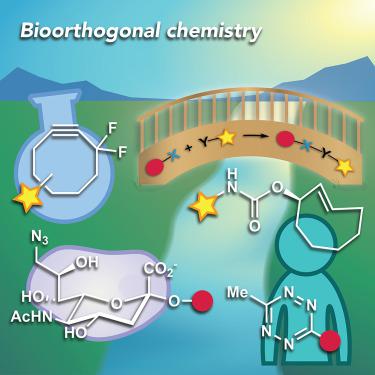Chem ( IF 19.1 ) Pub Date : 2023-06-05 , DOI: 10.1016/j.chempr.2023.05.016
Kaitlin M Hartung 1 , Ellen M Sletten 1

|
As chemical biologists sought methods to modify and study biomolecules in their native environments, the need for bioorthogonal chemical reactions emerged. These fast and selective reactions between otherwise inert, abiotic functional groups have enabled exploration of some of the most intriguing and challenging questions in chemical biology. Further, the ability to perform organic reactions in cells and organisms has led to important applications in clinical spaces, and one reaction is now an integral part of a phase 2 trial for treating solid tumors. Given that bioorthogonal chemistry was a recipient of the 2022 Nobel Prize, we expect this field to be even more energized. Here, we highlight some of the most recent studies in this sphere and how these set the stage for where bioorthogonal chemistry is headed.
中文翻译:

生物正交化学:桥接化学、生物学和医学
随着化学生物学家寻求在天然环境中修改和研究生物分子的方法,出现了对生物正交化学反应的需求。这些惰性、非生物官能团之间的快速和选择性反应使得我们能够探索化学生物学中一些最有趣和最具挑战性的问题。此外,在细胞和生物体中进行有机反应的能力已经在临床领域产生了重要的应用,并且一种反应现在是治疗实体瘤的二期试验的一个组成部分。鉴于生物正交化学获得了 2022 年诺贝尔奖,我们预计该领域将更加充满活力。在这里,我们重点介绍该领域的一些最新研究,以及这些研究如何为生物正交化学的发展方向奠定基础。































 京公网安备 11010802027423号
京公网安备 11010802027423号